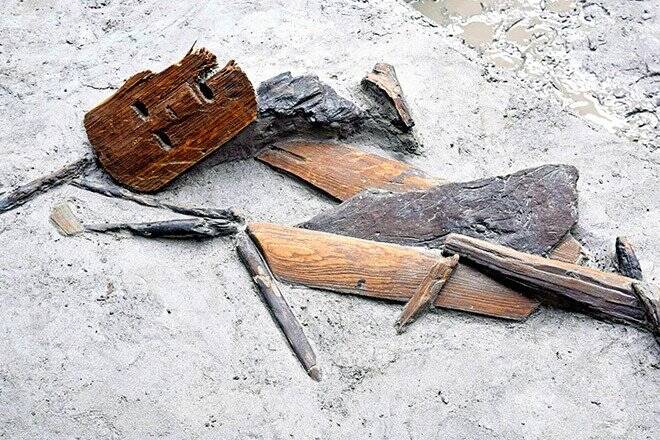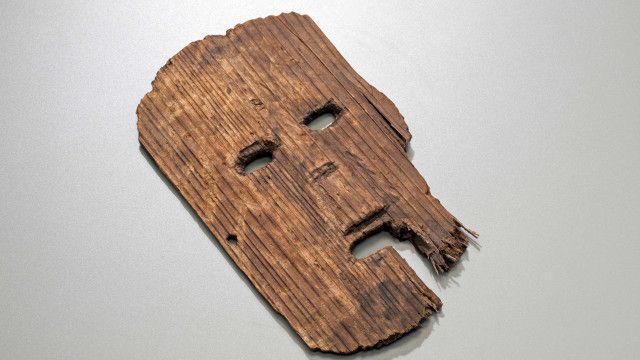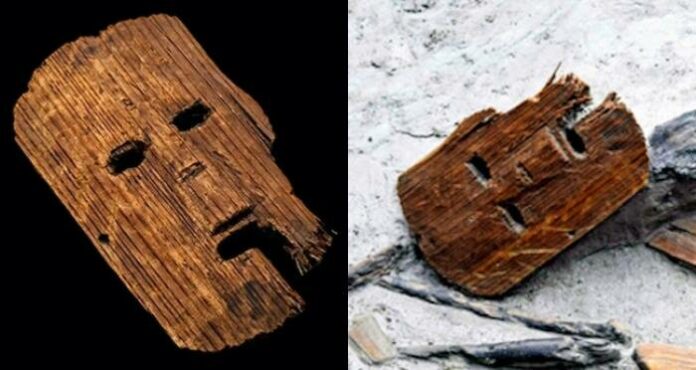In a fascinating turn of events, the construction of the Osaka Monorail extension has unveiled a treasure trove of ancient artifacts, including a remarkably well-preserved 1,800-year-old ritual mask. This discovery offers a captivating glimpse into the Yayoi period (300 B.C.E. – 300 C.E.), a transformative era in Japanese history marked by the shift from hunting and gathering to agriculture.
Discovery of the Ritual Mask

During preparatory excavations for the Osaka Monorail extension, archaeologists from the Osaka Center for Cultural Heritage uncovered several wooden objects, among which the ritual mask stands out. Made from cedar, the mask measures 11 inches in length and seven inches in width, featuring eye and mouth holes, and a perforation on the side likely used to secure it with a string.
The mask, resembling a human face, is believed to have played a significant role in ancient rituals. However, its considerable weight suggests it might have been displayed rather than worn. Kaoru Terasawa, director of the Research Center for Makimukugaku in Sakurai City, Nara Prefecture, hypothesizes that the mask represented a deity, specifically a “spirit of a head,” symbolizing the authority of Okimi, the leader of the Yamato Kingship.
Historical Context and Significance

The Yayoi period, spanning from 300 B.C.E. to 300 C.E., was a pivotal time in Japanese history. It saw the introduction of wet-rice cultivation, leading to the establishment of agrarian societies and permanent settlements. This shift brought about significant social changes, including the emergence of social classes and power dynamics. The Kyoto National Museum notes that this period witnessed increased conflicts over land and water, as evidenced by the discovery of bodies with battle wounds and shields.
The Yamato Kingship, which reigned from the third to the seventh century, played a crucial role during this time. Powerful clans, led by figures like Okimi, influenced local leaders and their ceremonies. Terasawa suggests that the rituals of the Yamato Kingship likely inspired the use of the mask in local festivals and ceremonies.
Similar Discoveries and Additional Artifacts

This 1,800-year-old mask is not an isolated find. Similar wooden masks from the same period have been discovered before, including one from the Makimuku ruins in Nara Prefecture. These masks highlight the importance of ritualistic practices in ancient Japan.
In addition to the mask, archaeologists found other ancient wooden objects during the monorail construction excavation. These include a wooden water bucket and a charred wooden object resembling a gardening hoe, discovered 9.5 feet beneath the surface. These artifacts provide further insight into the daily life and practices of the Yayoi period.
Conclusion
The discovery of the 1,800-year-old ritual mask during the Osaka Monorail construction offers a remarkable window into the Yayoi period. It underscores the significant social and cultural transformations that occurred as Japan transitioned from a hunter-gatherer society to an agrarian one. These artifacts, along with similar findings, enrich our understanding of ancient Japanese rituals and the societal structures of the time. As archaeological efforts continue, we can expect to uncover even more about this fascinating era in Japan’s history.
